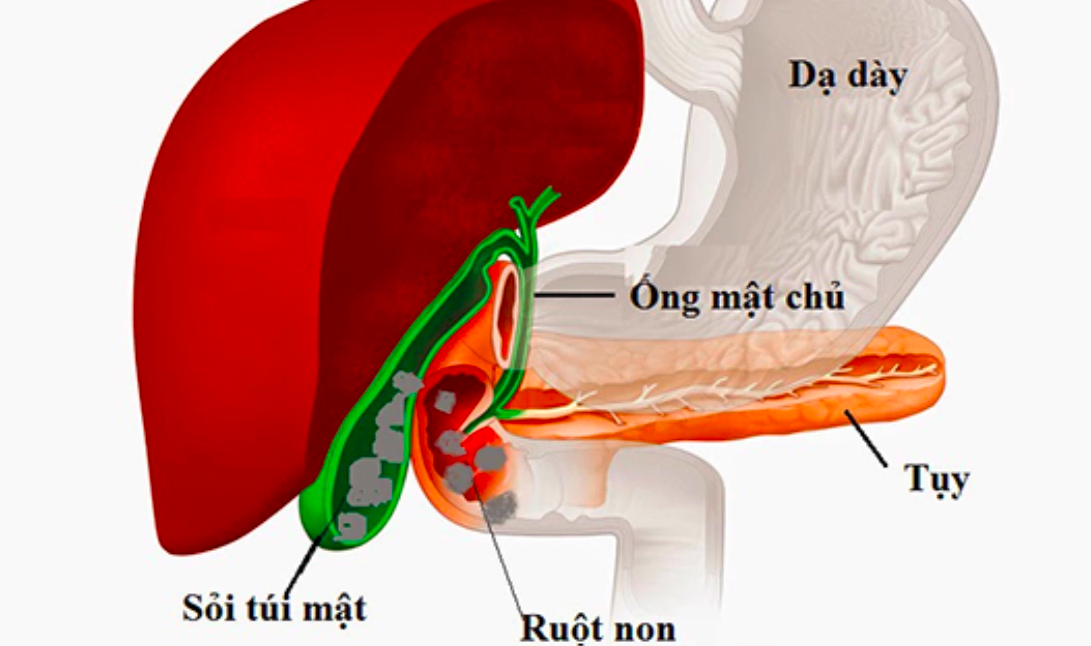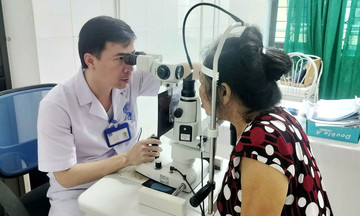Bile duct cancer is not only rare but also difficult to diagnose early and complex to treat, according to Doctor Nguyen Thanh Khiem of Bach Mai Hospital's Center for Digestive - Hepatobiliary - Pancreatic Surgery. Approximately 90% of bile duct cancer cases are discovered when the disease is inoperable.
Gallstones are hardened deposits that form in bile. This condition is common in Vietnam and many Asian countries, mainly due to unsanitary eating habits that allow parasites to enter the bile duct. Initially, gallstones often cause cramping abdominal pain, fever, and jaundice due to blockage or infection. However, over time, they cause chronic inflammation, significantly increasing the risk of cancer.
According to Doctor Khiem, the mechanisms of carcinogenesis in the presence of gallstones include: continuous mechanical friction between the stones and the lining of the bile duct causing persistent damage; blockage leading to bile stasis and changes in its chemical composition, making it toxic to epithelial cells.
Blockage also creates a stagnant, oxygen-deficient environment for bacteria to thrive. Bacteria from the intestines can easily travel up into the bile duct, producing toxins and harmful metabolites (such as secondary bile acids and ammonia). These substances can damage epithelial cell DNA, promoting severe inflammation and malignant transformation.
Bile stasis triggers a widespread inflammatory response. White blood cells, macrophages, and lymphocytes migrate to the damaged area, releasing cytokines, chemokines, and growth factors, maintaining a state of chronic inflammation. Over time, this process disrupts cell replication, causes DNA replication errors, and limits self-repair capabilities, increasing mutations.
Prolonged chronic inflammation weakens the local immune system, reducing the ability to identify and eliminate abnormal cells. Simultaneously, cells produce more free radicals, increasing the risk of gene mutations. When these mutations affect genes that control the cell cycle, they can promote abnormal growth, forming malignant tumors.
In its early stages, bile duct cancer is asymptomatic and difficult to detect. Symptoms are often vague and easily mistaken for other hepatobiliary diseases. Individuals with a history of gallstones should undergo regular checkups, paying particular attention to jaundice and yellowing of the eyes—typical signs when a tumor obstructs bile flow. Jaundice in cancer usually progresses gradually, unlike jaundice caused by gallstones, which is accompanied by abdominal pain and fever.
Other symptoms include generalized itching due to increased bilirubin, pale stools, dark urine, pain in the right upper quadrant or epigastric region—dull or persistent pain, unexplained weight loss, fatigue, loss of appetite, and persistent low-grade fever due to inflammation or cancer.
 |
Gallstones can lead to cancer. Photo: *Hospital provided* |
Bile duct cancer is a dangerous disease, but proactive awareness, effective management of gallstones, and regular screening can help detect the disease early, increasing the chances of successful treatment and improving quality of life.
Le Nga












